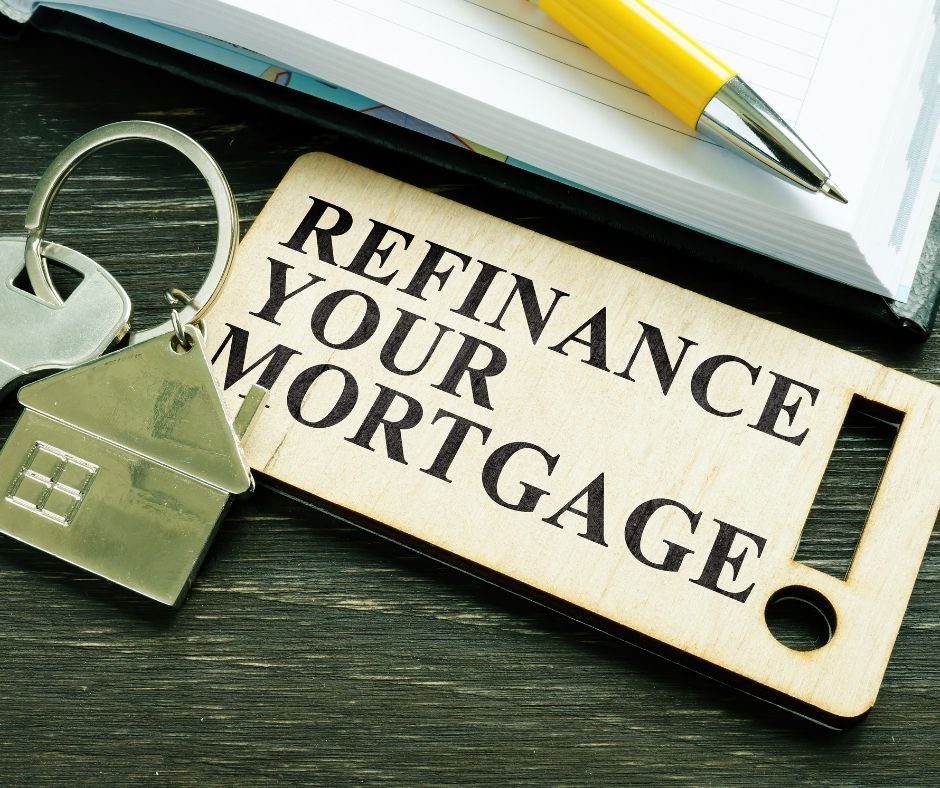Refinancing your mortgage might sound complicated, but at its core, it’s simple: you replace your current home loan with a new one that has better terms.
Many homeowners refinance to take advantage of lower interest rates, adjust their monthly payments, or access the equity they’ve built up in their homes. Done right, it can save you serious money and give you more control over your financial future.
Quick Tips About Refinancing:
Refinancing means swapping your old mortgage for a new one with better terms.
Most people refinance to lower monthly payments, access home equity, or pay off their loan faster.
You can also use it to combine debts into one simple payment.
Watch out for fees, appraisals, and prepayment penalties, which can impact your savings.
What Exactly Is Mortgage Refinancing?
Think of refinancing like trading in your car - you keep the same house, but you get a better loan.
This can mean:
Lower monthly payments
Access to your home’s equity (cash-out refinancing)
Changing your loan length (shorter term = less interest overall; longer term = lower monthly payments)
Renewal vs. Refinancing: What’s the Difference?
This is where a lot of homeowners get confused.
Renewal: When your mortgage term ends (usually every 1-5 years), you sign a new agreement to continue paying off your balance. It’s usually quick and penalty-free.
Refinancing: You replace your mortgage with a brand-new one, often with different terms, rates, or amounts. You can do this anytime, but it usually involves fees and sometimes penalties.
Bottom line: Renewing is about keeping things going, while refinancing is about making a change.
Why Home Equity Matters:
Home equity is simply the difference between your home’s value and what you still owe on your mortgage.
Example:
Home value: $500,000
Mortgage balance: $300,000
Your equity: $200,000
When refinancing, most lenders require you to keep at least 20% equity in your home. That leftover equity is your financial cushion.
Types of Refinancing:
Different goals call for different refinancing strategies:
Rate-and-Term Refinance: Swap your loan for a better rate or term. Good for lowering payments or paying off your mortgage faster.
Cash-Out Refinance: Borrow more than you owe and take the difference in cash. Useful for renovations, debt repayment, or big expenses.
Debt Consolidation Refinance: Roll high-interest debts (like credit cards) into your mortgage. One payment, usually at a much lower interest rate.
Refinancing to Lower Interest Rates
Even a small rate drop can make a big difference.
Example:
On a $500,000 loan, dropping from 6% to 5% saves about $291/month.
But you need to factor in:
Closing costs (appraisal, legal, lender fees)
Prepayment penalties (especially if you break your mortgage early)
A good rule of thumb: refinancing usually makes sense if you can lower your rate by at least 2% and plan to stay in your home long enough to recoup the costs.
Cash-Out Refinancing:
Want access to cash without selling your home? Cash-out refinancing could be the answer.
Example:
Home value: $500,000
Current mortgage: $300,000
New refinance loan: $400,000
Cash in your pocket: $100,000
It’s cheaper than a personal loan or credit card, but comes with risks:
Higher loan balance = bigger monthly payments
If home values fall, you could end up owing more than your house is worth
Best used strategically - for investments in your home, education, or consolidating debt.
Refinancing to Consolidate Debt:
Mortgage rates are often far lower than credit card or personal loan rates. By refinancing, you can roll high-interest debt into your mortgage.
Example:
$20,000 in credit card debt at 20%
$300,000 mortgage at 5%
After refinancing to $320,000, your new single payment could save you $200+ each month.
Just make sure you don’t fall back into the cycle of running up new debt afterward.
Costs of Refinancing:
Refinancing isn’t free. Expect:
Legal fees: $750-$1,250
Appraisal: $300-$600
Mortgage discharge fee: $200-$350
Prepayment penalties: depends on your lender and contract
Run the numbers carefully, calculate your break-even point (how long it takes for your savings to outweigh your costs).
Conclusion:
Refinancing can be a smart financial move, whether you want to save money, pay down debt, or free up cash for other goals. But it’s not always the right choice, costs and penalties can eat into your savings if you’re not careful.
The key is to understand your equity, weigh the fees, and know your long-term goals. And remember: refinancing might sound simple, but mortgages are a big financial commitment.
Always consult with a licensed mortgage or home loan professional before making a decision.

